
Looking for Bluetooth speakers that are a little different than average, but ones that have great sound quality? I recently had a chance to try out three new speakers from Marshall: the Marshall Tufton, Kilburn II, and the Stockwell II. I got to play around with each of them to see what they sound like, how easy they are to use and what sets them apart from each other.
Reviewing Marshall Tufton, Kilburn II, Stockwell II
Marshall Tufton is the largest and most powerful speaker in this range, followed by the Kilburn II, and then the Stockwell II is the smallest and most compact. In the spirit of ‘go big or go home’, I unboxed the Tufton first to get things started.
Marshall Tufton sound quality
I review a lot of speakers and most of the time I power them up and play them for a while and get to know them then make a pronouncement about like or dislike. The second I turned on the Marshall Tufton, it was as if Dave Ghohl kicked in my door with the rest of the Foo Fighters and unleashed a live show in my living room.
 I actually stopped and turned to look at it, mouth agape. The sound is astonishing. True, detailed, clear vibrant and just so easy to listen to. Plus, the impressive sound, throbbing bass, and overall power of this speaker gave me a truly room filling sound.
I actually stopped and turned to look at it, mouth agape. The sound is astonishing. True, detailed, clear vibrant and just so easy to listen to. Plus, the impressive sound, throbbing bass, and overall power of this speaker gave me a truly room filling sound.
I also immediately fell in love with the retro amp-style design. As a mid-century modern fan I appreciate the retro look that still has all the modern technological conveniences.
Since we’re on the subject of sound quality, let’s get right to how the other two sound also.
Sound quality: Marshall Kilburn II
The middle child of the Marshall family, the Kilburn II has many of the same features as the Tufton, as we’ll see. I did notice with this one, I needed to crank the volume level to about 6 to be able to hear it. (I’d first connected to the Tufton and it was plenty loud on 3 and when I switched seconds later without changing anything else, I couldn’t hear a peep from the Kilburn II.)
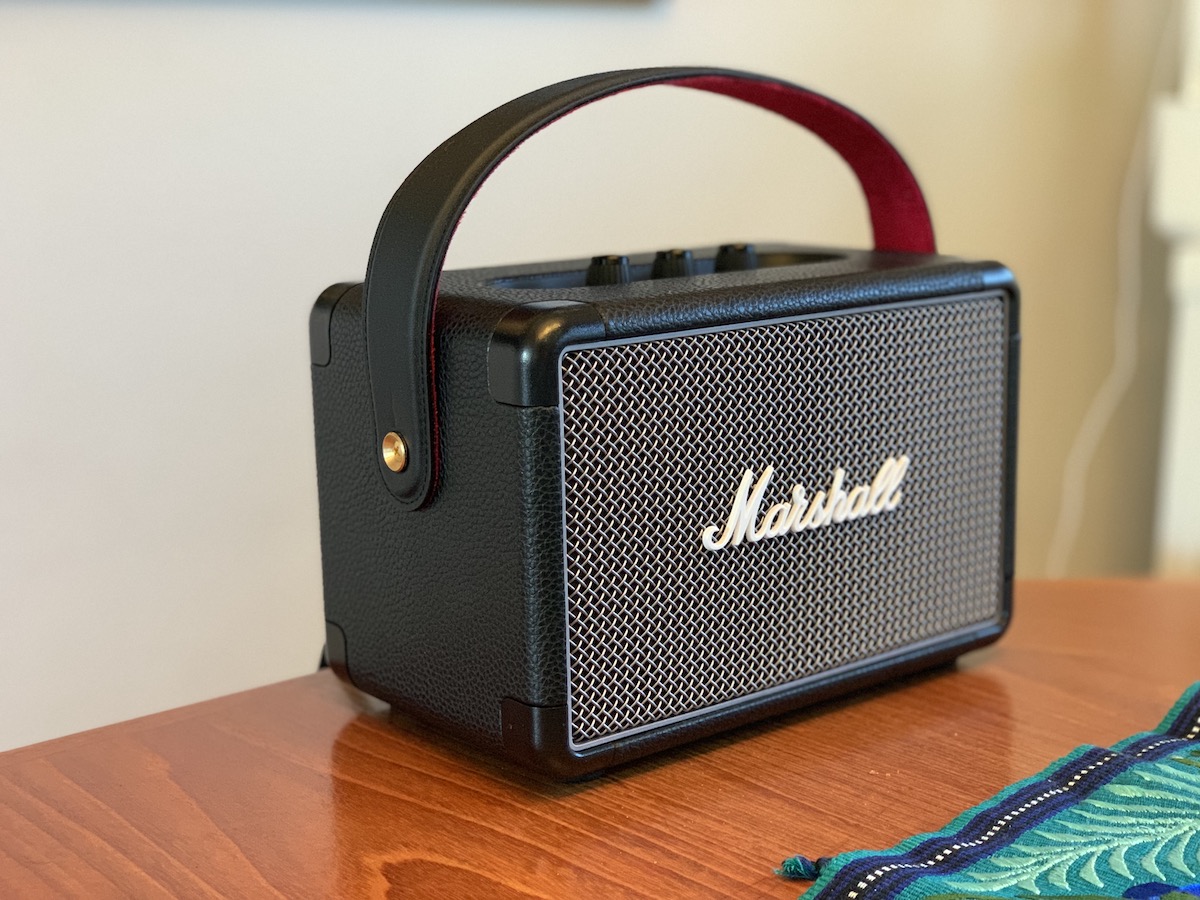 Volume oddities aside the sound quality is good, though not as knock-you-over as the Tufton. (In hindsight I probably should have started small and worked my way up.) The overall sound has a strong level of bass (and both bass and treble are adjustable on the speaker) but I did notice a tich more raspiness. Probably nothing you’d notice on your own without having the Tufton next to it. The Kilburn II isn’t quite as rich and full, but it is still very good.
Volume oddities aside the sound quality is good, though not as knock-you-over as the Tufton. (In hindsight I probably should have started small and worked my way up.) The overall sound has a strong level of bass (and both bass and treble are adjustable on the speaker) but I did notice a tich more raspiness. Probably nothing you’d notice on your own without having the Tufton next to it. The Kilburn II isn’t quite as rich and full, but it is still very good.
Sound quality: Marshall Stockwell II
When it comes to the Stockwell II, this little speaker also sounds phenomenal; it has a surprising amount of power for its size. It sounds great with a good bass level and clear overall sound, with no raspiness, tinniness or reverberations.
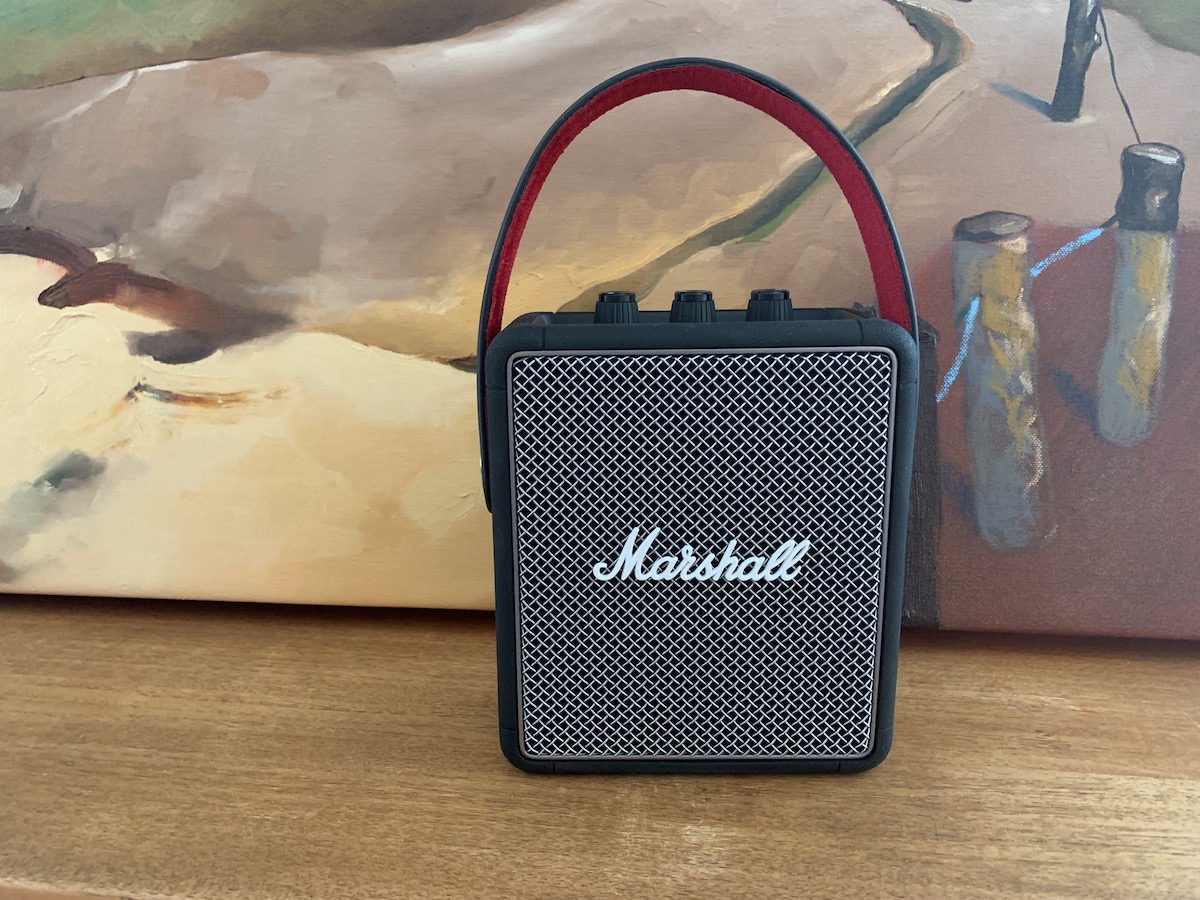 My biggest issue with this speaker was the same as the Kilburn II; I had to crank up both the volume on my phone and the on the speaker to get it to play loud enough. I was using this one at about 75-80% of the phone’s volume, and the dial set at 10 on the speaker most of the time. Not sure what’s going on with the volume with this speaker, but in particular, it’s pretty limiting.
My biggest issue with this speaker was the same as the Kilburn II; I had to crank up both the volume on my phone and the on the speaker to get it to play loud enough. I was using this one at about 75-80% of the phone’s volume, and the dial set at 10 on the speaker most of the time. Not sure what’s going on with the volume with this speaker, but in particular, it’s pretty limiting.
Curious, I grabbed my Google Pixel 3 (I’d been using it with the iPhone XS Max previously) and connected. Same issue; I needed this speaker cranked in order to hear it at a decent level.
Marshall Portable Bluetooth speakers: Looks, styling, & size
Each of these speakers is largely the same design; black case, protected corner tabs to for durability, they’re all somewhat water-resistant (we’ll get to that in a sec) and they all have the same leather guitar-style carrying strap. They also have all the same buttons and knobs on top.
There’s three dials on top: volume, bass, and treble. There’s also a small Bluetooth button, and a battery level indicator.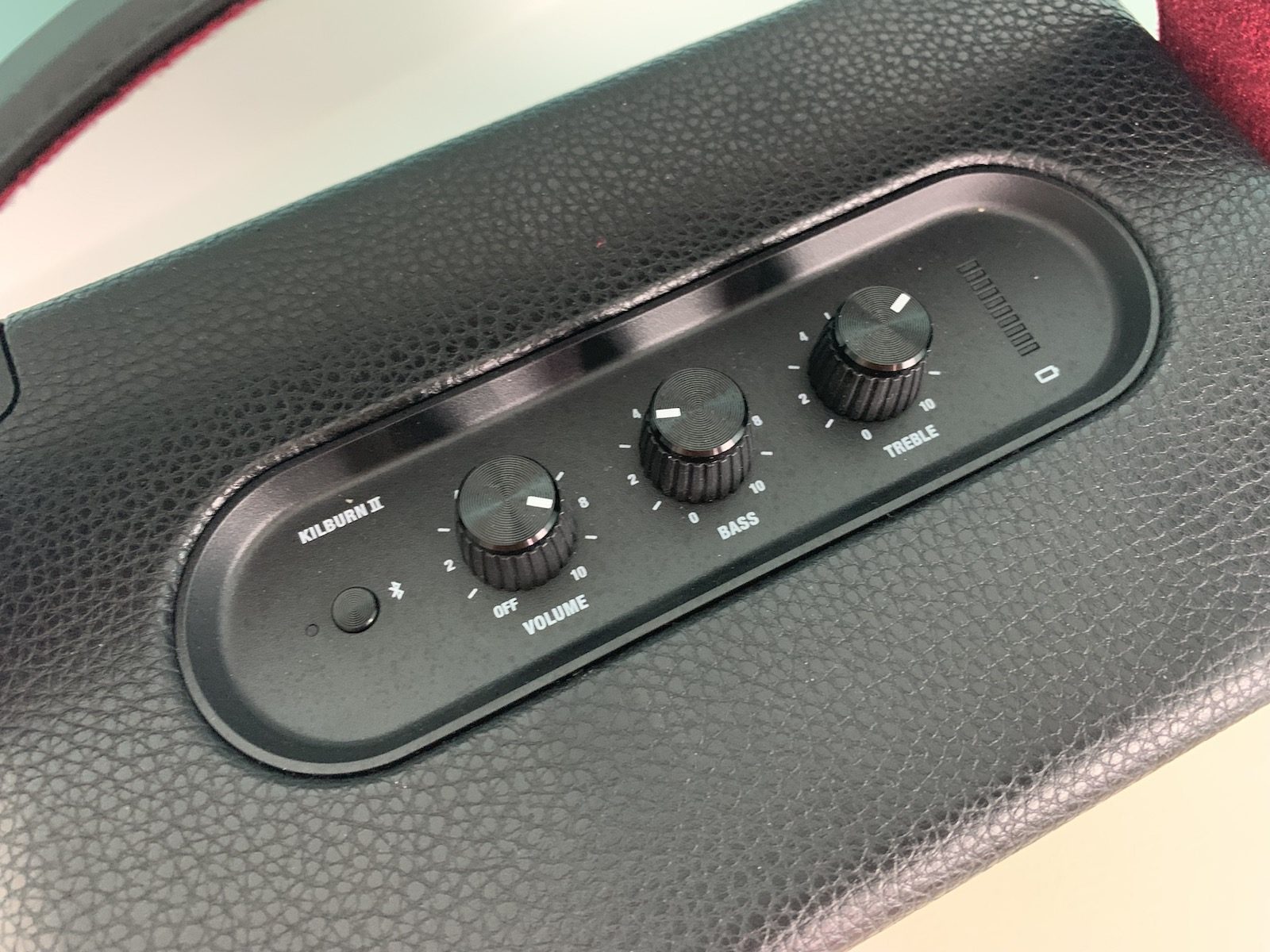
The Tufton weighs about 10 pounds and stands nearly 14 inches high. It’s big, heavy, and you’ll probably find it most at home on the floor.
Kilburn II is what I’d call a medium-sized speaker. Weighing in at about 5 pounds it is 10″ at its widest.
The Stockwell II is the smallest of the Marshall speakers I tried out. Unlike the Kilburn or the Tufton, this speaker uses a USB- C charging cable to power up. The others use a dedicated AC cord. It’s about 3 pounds, and much smaller, at 7″ at its widest point.
Battery life: Marshall Tufton, Kilburn II, Stockwell II
Somewhat surprisingly, each of the speakers have pretty much the same battery life. Marshall says the speakers will give you around 20 hours of portable play time. Of course if you keep them connected to power, whether using the AC power of the Kilburn II, or Tufton or the USB-C power of the Stockwell II, you’ll have endless access to music, podcasts and audio.
These speakers all also have quick charging, but how much you get, and how long a full charge takes varies by speaker. With Tufton, 20 minutes gets you 4 hours of portable playtime, while a fully charged battery can be reached in 2.5 hours.
Kilburn II has quick charging capabilities so you can pick up and leave at a moment’s notice. 20 minutes gets you 3 hours of portable playtime, while a fully charged battery can be reached in 2.5 hours.
Stockwell II has quick charging capabilities so you can pick up and leave at a moment’s notice. 20 minutes gets you 6 hours of portable playtime, while a fully charged battery can be reached in 5 hours.
Water resistance: Marshall Tufton, Kilburn II, Stockwell II
The Tufton and the Kilburn II are both IPX2 water-resistant. That means it’s okay against drops of water, but you wouldn’t want to get it actually wet.
The Stockwell II meanwhile is IPX4 water-resistant. That means it can handle more splashing, but still, you want to keep it out of direct water.
Marshall Tufton, Kilburn II, Stockwell II: Power and loudness
Not surprisingly, the Tufton will give you the most sound for its size. This one will kick out 102 dB at 1 m. Next up the Kilburn to those significantly smaller will still pack 100 dB at 1 m. The smaller Stockwell two has a maximum SPL of 80 dB at 1 m. When it comes to wattage, the Tufton has 840 W, the Kilburn two will give you 25 W, and the Stockwell has 10 W.
The Tufton in particular has what Marshall calls a 3-way design and rear-facing driver so it should be powerful and clear sounding all over the room or even outdoors.
I’ll say, each of these speakers can get loud and fill a room; they’re definitely powerful.
Each of these speakers by the way sound pretty good from any angle.
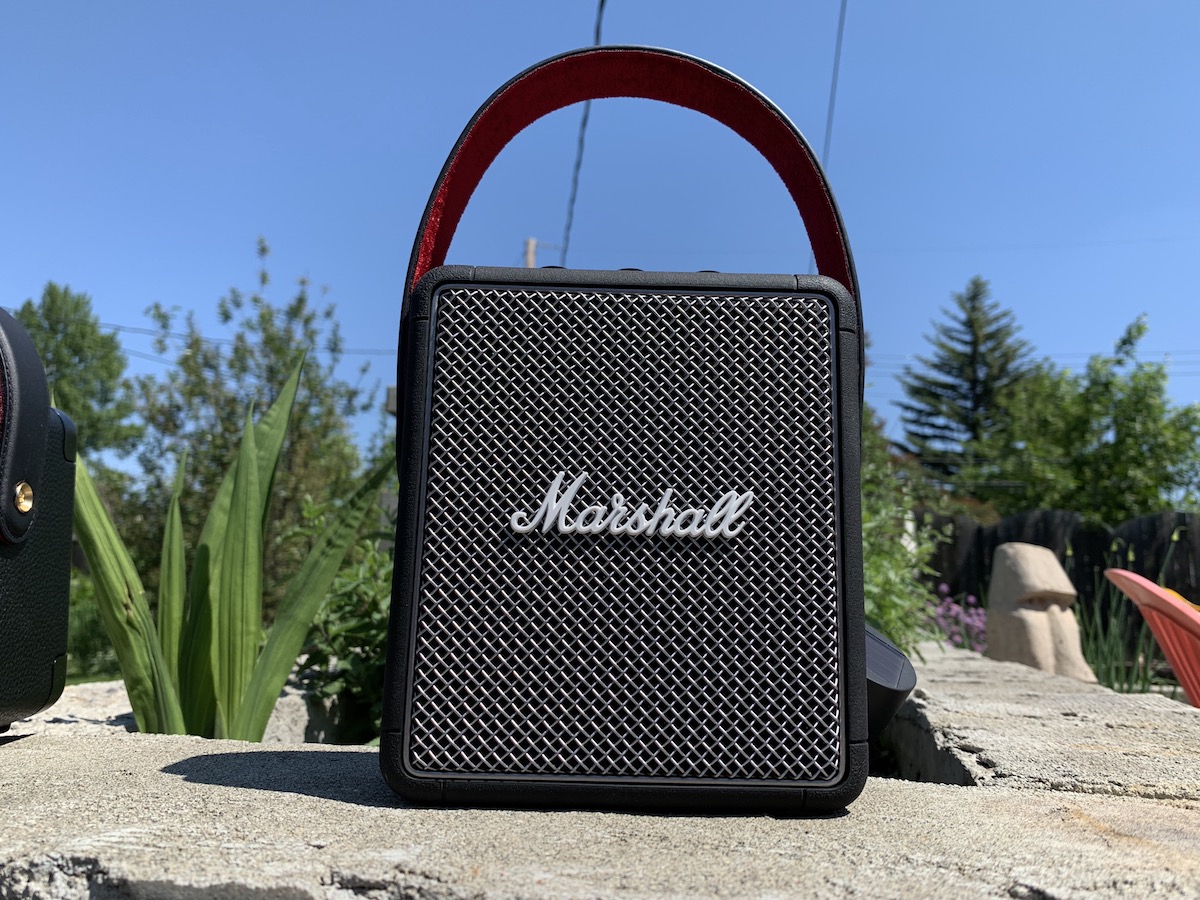 Outdoors sound test: Marshall Tufton, Kilburn II, Stockwell II
Outdoors sound test: Marshall Tufton, Kilburn II, Stockwell II
I tried the Marshall speakers out in my backyard to see how well they could fill outdoor space and again I was impressed. Even the small Stockwell II was impressive outside. Obviously it had a lot less power and would be best suited to a small gathering and sitting nearby, but I could hear the Kilburn II easily across the yard.
Bluetooth Range
The Bluetooth range on these speakers is supposed to be substantial. All of the speakers have a declared range of 30ft. I tried walking all over my house and I didn’t find the speakers disconnected from the phone or dropped out.
Multihost functionality
Each of the speakers in this Marshall lineup will allow you to connect more than one Bluetooth device, meaning you can connect it to your phone and your tablet, or let your guests connect as well so they can play DJ at your party.
I found I was able to connect several devices to the Tufton for example, but in practice, I could only ever play from more than one device at a time. When I tried to use another device, nothing would happen. Either the Tufton would disappear from the Bluetooth list, or I’d just get a “Connection Unsuccessful” pop up.
I tried disconnecting from the first phone and then trying to connect from the second device, but no dice. I ended up having to re-pair.
You can also connect an auxiliary source via the 3.5 mm stereo jack if you wish.
Getting connected & set up
 Getting connected to either of these speakers is pretty easy. If the device is plugged in, it will seem as though you can just push the Bluetooth button and you should be able to connect. What’s not obvious though is that you need to turn the volume on. That turns the power to the device on and let you connect using the Bluetooth button. Push and hold the Bluetooth button until you get a small sound, then go to the settings menu on your phone or device, look for Bluetooth, then search for the speaker by name in your Bluetooth menu. Tap to connect, and you should get another audio sound telling you things are working. After that, load up your music and you’re ready to go.
Getting connected to either of these speakers is pretty easy. If the device is plugged in, it will seem as though you can just push the Bluetooth button and you should be able to connect. What’s not obvious though is that you need to turn the volume on. That turns the power to the device on and let you connect using the Bluetooth button. Push and hold the Bluetooth button until you get a small sound, then go to the settings menu on your phone or device, look for Bluetooth, then search for the speaker by name in your Bluetooth menu. Tap to connect, and you should get another audio sound telling you things are working. After that, load up your music and you’re ready to go.
Marshall Tufton, Kilburn II, Stockwell II: Multi-room music?
Wondering if you can use two or more of these speakers to play music in several rooms, or to create a stereo pair? The answer is no. They don’t connect to each other, which is kind of disappointing. Marshall tells me that stereo pairing is possible with Acton II Bluetooth speakers, 2 X Stanmore II Bluetooth speakers or 2 X Woburn II but not with this portable speaker lineup.
Where’s the Voice control?
One big thing I think this lineup is missing is voice control. It doesn’t seem as though they’re compatible with Alexa, Google or Siri, which is kind of a shame. Voice control is a huge feature that many new speakers are adding and it’s disappointing not to see it in this (expensive) lineup.
Overall: Marshall Tufton, Kilburn II & Stockwell II
The downsides? For the price, these speakers are missing some features, like voice control and the ability to connect more than one speaker to create a stereo pair of multiroom audio.
I also found the MultiHost function didn’t work, and the low volume levels when connected to the Stockwell II and Kilburn II felt quite limiting.
Overall, if I were buying, my pick here would be the Tufton for sure. Mainly because of the poor volume level via the Bluetooth connection on both the Stockwell II and Kilburn II, those are a distant second and third place pick for me.
Find the Marshall Tufton, Kilburn II, and the Stockwell II at Best Buy.



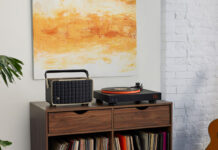
How is stockwell2 compared to jbl charge 4
You and me both, Ian! 😉
Thanks! These speakers look cool, they remind me of guitar amps! I’m definitely interested in one of these, preferably the Tufton!
Comments are closed.